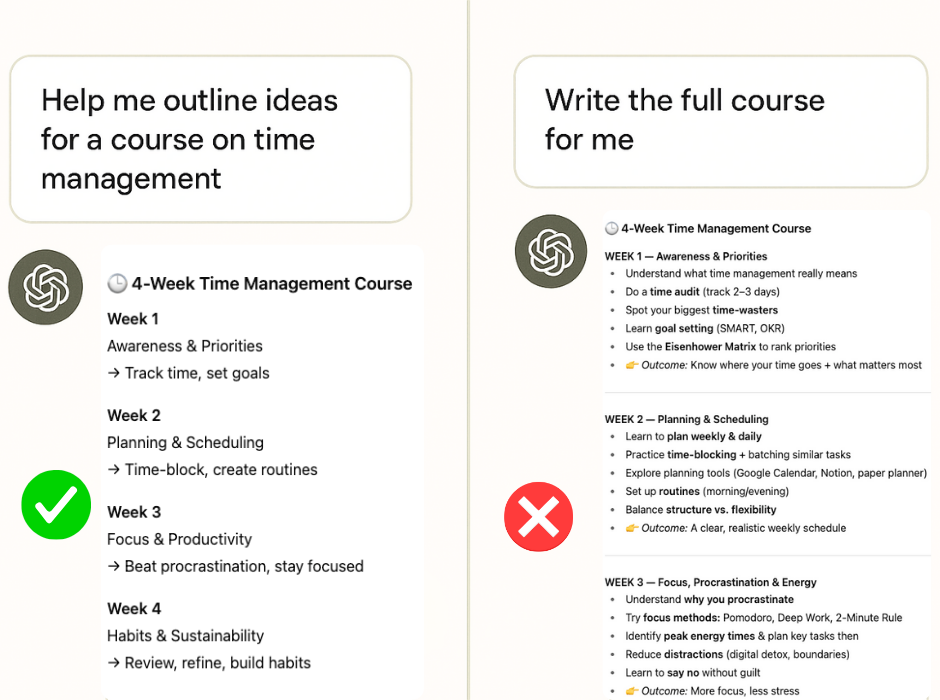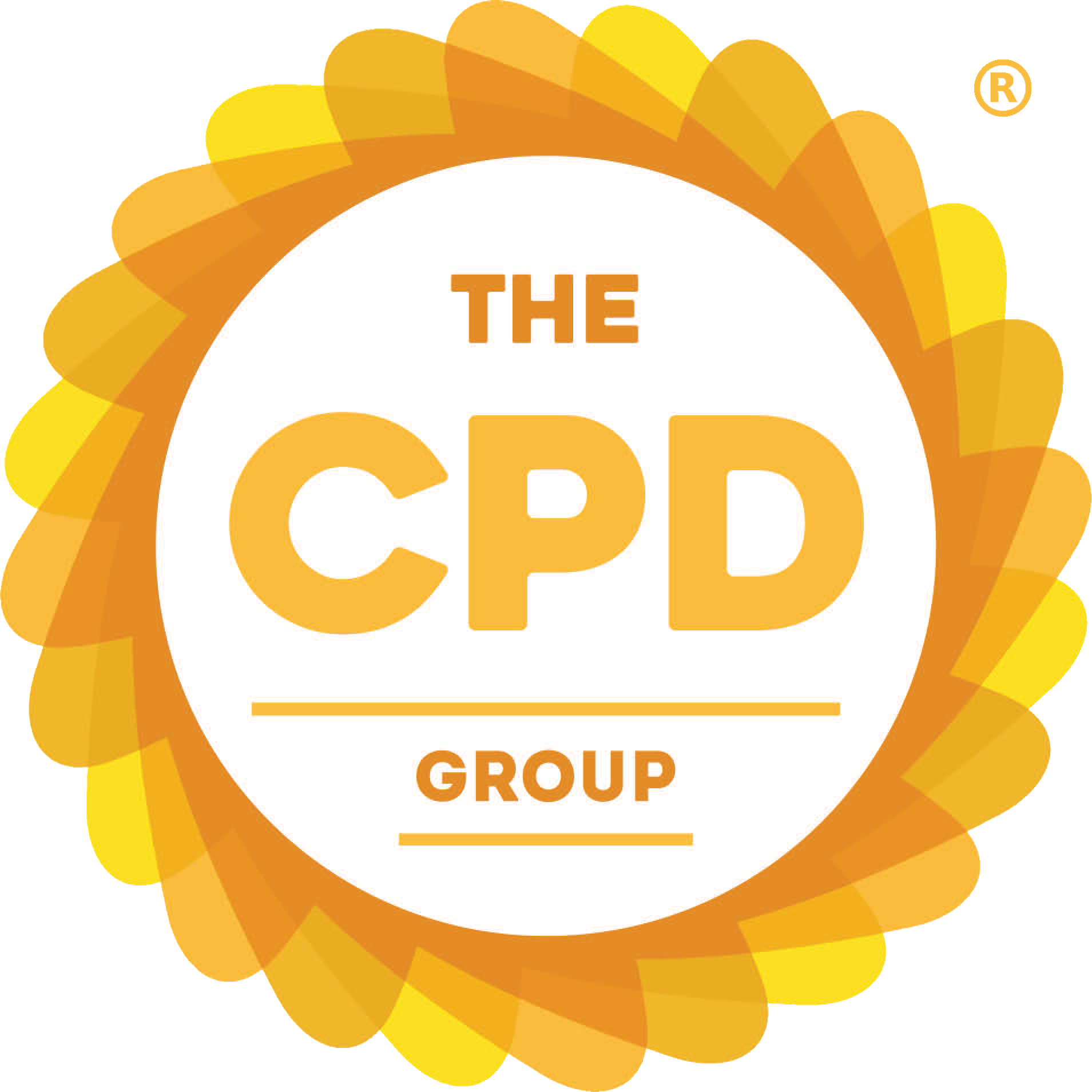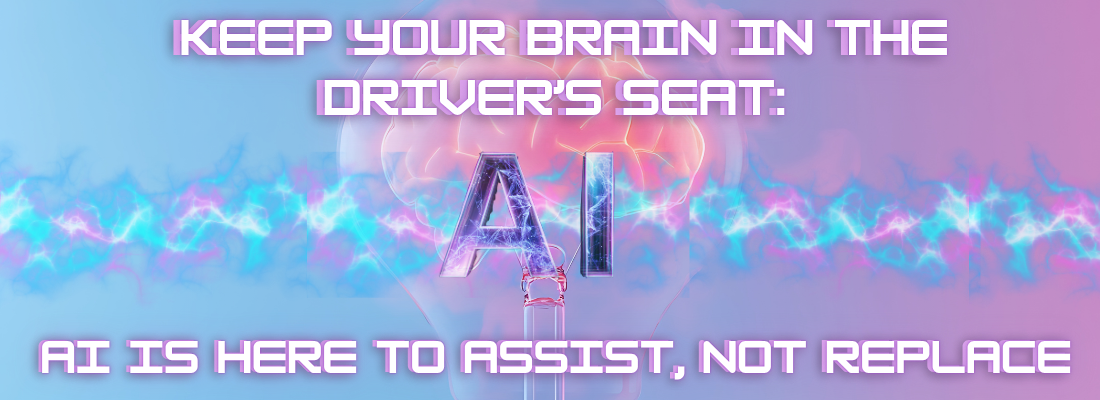Keep Your Brain in the Driver’s Seat: AI Is Here to Assist, Not Replace
Artificial Intelligence (AI) is changing the way we create, teach, and learn. From drafting outlines to generating ideas in seconds, AI is a powerful new partner in course development. But at The CPD Group, we believe something even more important: your brain should always be in the driver’s seat.
As educators, trainers, and course creators, you bring the expertise, judgment, and creativity that make learning meaningful. AI can help you work faster and think broader, however it should never replace your personal insight or professional standards. Especially when developing CPD-accredited courses, human critical thinking, compliance checks, and authenticity remain non-negotiable.
At The CPD Group, we care deeply about how your courses are made. Our mission is to help you reach your highest potential as a creator and achieve accreditation with confidence, while keeping integrity, originality, and professional quality front and centre.

Here’s how to make AI your best assistant- not your autopilot:
✅ Use AI to Structure or Outline Ideas
AI is brilliant at organisation. Use it to draft course frameworks, suggest learning outcomes, or shape assessment ideas. Let it spark your thinking, but make sure the final structure reflects your own logic and expertise.
❌ Don’t Let AI Write the Entire Course
AI should guide your process, not lead it. Every course needs your professional experience and personal voice. A machine can’t replicate your unique insights or the connection you bring to learners.
Example: How to Use AI the Right Way (and the Wrong Way)
Imagine you’re creating a course on Time Management for Remote Team

You open ChatGPT and ask:
“Create a 4-week course outline on time management for remote workers.”
✅ Good move!
AI quickly gives you a clear structure, which is a great starting point. You can now take that framework, adapt it with your own knowledge, and ensure it meets your accreditation standards.
Now let’s flip it. You ask:
“Write my full course on time management for remote teams.”
❌ Not so good.
The AI might produce pages of content that sound polished, but the material could be inaccurate, outdated, or missing key compliance requirements. More importantly, it loses your voice, the experience, judgment, and authenticity that make your course credible and engaging.

✅ Use AI for Research Assistance
AI can scan mountains of information in seconds- perfect for gathering ideas, trends, or summaries. But always check the accuracy of what it gives you. AI isn’t a research authority; it’s a research tool.
❌ Don’t Skip Fact-Checking
AI can be wrong or outdated. Always verify information against credible, up-to-date sources. Accuracy is key when building accredited courses that learners and regulators can trust.
Example:
Let’s say you’re creating a course on Sustainable Business Practices. You might ask AI to:
“Summarise the latest trends in corporate sustainability.”
Good move!
AI can give you a quick overview of common themes like carbon reduction, ethical supply chains, and green innovation. That’s a great way to spark ideas and see what’s trending.
But here’s the catch- if you take that information at face value, you could run into trouble. The AI might pull from outdated reports or make broad claims without real data to back them up.
The better approach:
Use what AI gives you as a starting point, then double-check every fact, statistic, and reference using reliable, up-to-date sources. For instance, cross-check sustainability citings and data with reports from recognised organisations like the UN Global Compact or World Economic Forum.
That extra step turns AI’s general insights into credible, accredited course content you can stand behind.
✅ Use AI to Refine and Polish Content
Grammar, phrasing, formatting, AI is great for this. It can make your writing clearer and more polished, saving you time. But the ideas, tone, and substance? Those must be yours.
❌ Don’t Treat AI Outputs as Original Work
AI doesn’t create from scratch, it generates patterns based on existing content. True originality comes from you. Make sure your work reflects your own thinking and doesn’t unintentionally duplicate others’ materials.
AI is here to enhance what you do, not replace the skills and insight that make your work valuable. When used responsibly, it can help you create smarter, faster, and more engaging courses, while ensuring your personal expertise stays in the spotlight.
Example:
Imagine you’ve just finished writing a module for your course on Effective Communication Skills. You paste your draft into AI and ask
“Can you check this for grammar, clarity, and tone?”
✅ Good move!
AI quickly highlights awkward phrasing, suggests smoother transitions, and helps tidy up formatting. The message is still yours, just clearer and more professional.
Now, let’s say you go one step further and ask
“Write a full lesson on effective communication for me.”
❌ Not so good.
The AI’s response might read well, but it’s likely made up of reworded ideas drawn from existing materials. That means the content might not be original, or worse, it could unintentionally echo someone else’s work.
By using AI to refine instead of replace, you protect your originality, strengthen your professional credibility, and make sure your course truly represents your expertise.

At The CPD Group, we’re here to guide and support you every step of the way, helping you design, refine, and accredit courses that truly stand out. Embrace AI as your creative partner, not your replacement. Keep your expertise in the spotlight, your ideas at the heart of your work, and together, we’ll continue raising the standard for learning excellence.


Discussion (0)
Join the conversation and share your insights with our community
Join Our Community
Share your expertise, ask questions, and engage with fellow CPD professionals
Start the Conversation
Be the first to share your thoughts on this article. Your insights could help other professionals in their CPD journey.